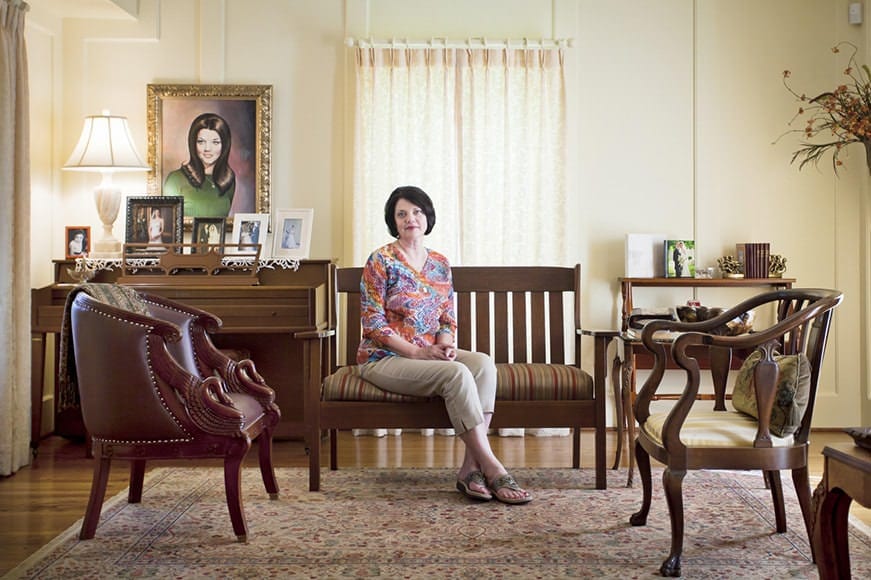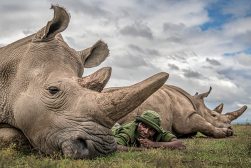
5 Tips for Environmental Photography Portraits
If you want to create engaging environmental portraits, read these 5 tips by environmental portrait photographer Carla Coffing on Shotkit.
My name is Carla Coffing and I’m a freelance editorial and commercial photographer based in LA. I learned the tools for making photographs at the New England School of Photography, but the ability to make portraits came largely from being a waitress/bartender for 10 years.
I learned so many important skills as a waitress – I learned how to talk to anybody, how to multitask, how to remain calm even while running around, how to work hard and work as part of a team, how to value connection over money, and how to really listen and hold space for someone – a random someone.
These skills have helped me over and over in my photography career. Waitressing is also incredibly humbling, and there is tremendous value in humility!
I was painfully shy when I started making portraits. It was around the same time that I went from being a waitress to having the Friday day bar shift at Charlie’s Kitchen, this dive bar in Cambridge that I worked at to help pay for photography school.
Charlie’s had a great juke-box, a cheap double-cheeseburger, and ran specials on PBR… you know the kind of place.
The customers were mostly regulars, workers coming in for their lunch breaks after a long week. That day bar shift inspired my first environmental portrait project – uniformed workers photographed in their domestic spaces.
I started building up the courage to ask my customers if I could come over and make a portrait of them. Everyone said yes.. which leads me to:
TIP #1
Whenever possible – don’t approach your subject with a camera in hand.

This is Helen Metros. I made this portrait in 2009, and at the time, HeIen was 76 Years old, and had been a waitress at Charlie’s for 55 years! She was a celebrity in Cambridge. She was remarkable – a huge heart, an impossibly sweet smile, and was so kind to everyone she met.
In my opinion, part of what makes a successful portrait is access, and in order to gain access you need to gain trust.
So if you are interested in portraiture, consider starting a project with people that you have built up trust with. Put your camera and lens away for a moment, and concentrate on your subject.
Speaking of gear, read this article on the best portrait lenses for some good advice on focal length selection.
Tip #2
Take your time.

Spend as much time with your subject as possible before even taking out your camera. This is Patrick, a T driver (metro).
I have found that it can really help to spend as much time as possible with your subject before even taking out your camera. Whether I am on an assignment or making work for a personal project or photo essay, I always leave my gear in the car when I first arrive to the location.
This allows for me to have a chance to connect with the person without them feeling on guard at all. I get a sense of how they are feeling and also have a chance to look around the environment and know exactly what I want to bring in to make my shot. Gear can be intimidating, so I tread lightly and only bring in what is necessary.
Tip #3
Scout and carefully compose your shot.

Pay attention to the edges! So much of the story can be told on the edges of the frame. This is Patrick, a boxer/bartender in his dining room.
With environmental portraiture, what you choose to include in the frame is just as important as expression and pose. I prefer to shoot on a tripod so that the frame is already set up, and it’s just a matter of waiting for the right moment to click the shutter.
This following portrait is one of my favorites. This is Raf. He would come into Charlie’s pretty regularly. I found out that he was a dentist and asked him if I could come over after my shift to make his portrait. This is what his bedroom looked like!! I couldn’t believe it! Sometimes real life is so much more extraordinary than anything you could possibly art direct.
How Much Do You REALLY Know About Photography?! 🤔
Test your photography knowledge with this quick quiz!
See how much you really know about photography...


Tip #4
Wait.

One thing that I have found useful is to leave the room after I have told my subject where to sit or stand. Tell them where you would like them, and then excuse yourself to the bathroom or to grab a glass of water. This allows for them to settle in and relax without being so camera aware.
Above is a portrait of Father Vincent Daily in his livingroom. Although the focus is a tiny bit soft, I love this image. I was asking him questions about his family, and the conversation got quite deep. I feel like I was really able to capture an honest moment with him.
Tip #5
Be inquisitive.

Direct your subject through conversation as opposed to asking them to smile or look a certain way. I believe that you will get a much more honest portrait this way.
Ask about things that you care about! People like to talk about themselves, especially if they feel like you are genuinely interested. If I am on an assignment, I do as much research as possible before I arrive so that I can ask questions that go deeper than just small talk. I have had some incredibly meaningful conversations with complete strangers through photography – conversations that I still think about.
Portraiture is a way to make someone feel important – seen.. heard. So listen and hold space for your subject!
Guest Review by Editorial and Commercial photographer Carla Coffing

Check out these 8 essential tools to help you succeed as a professional photographer.
Includes limited-time discounts.












